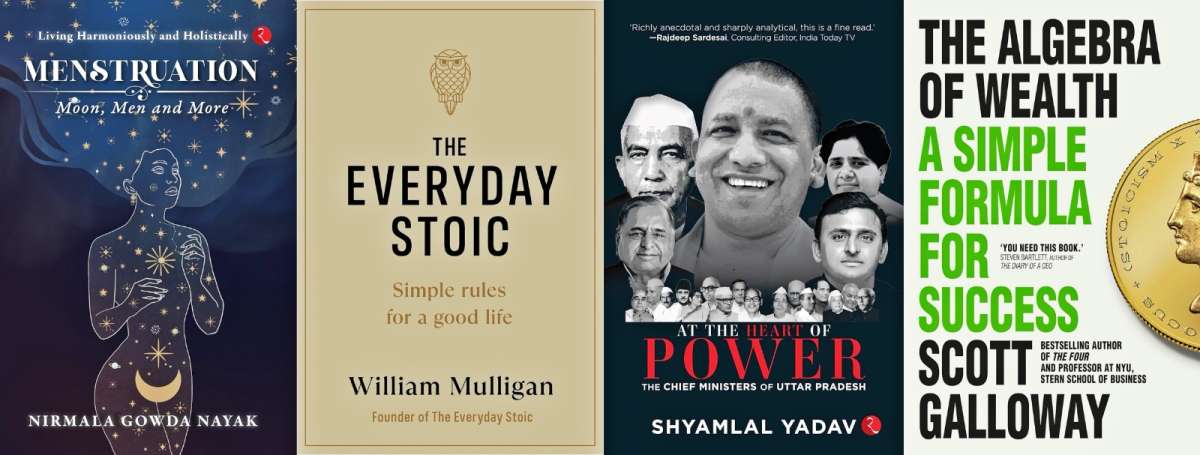Sometimes they resist and fight back against organised subterfuge across villages, people informing on each other and reward for getting ‘information on the Resistance militia’ and so on and all this is a big part of her next book ‘A History of Violence’…writes Vishnu Makhijani
As a journalist one is relentlessly exposed to stories of conflicts between the state and indigenous tribes, more in some areas than others like along some belts in the North east or Jharkhand, Chhattisgarh, or Orissa to name a few, says Richa Lakhera, the bestselling author of books like ‘Hungry Gods’, ‘Garbage Beat’ and “Item Girl”, who is back with an intense and gripping take of the supernatural and horror with a female combatant set in the current times.
“One cannot but be moved by their separate tragedies, the desolation which results from constant strife- wars which leave indigenous people homeless, in fact, thousands of forest dwellers are still fighting over traditional rights for their own land parcels,” Lakhera told in an interview of her new book, ‘Contamination’.
“That they manage to hang on optimism is also evidence of the stubborn resilience of the people. For any human being losing their land is traumatic but the suffering is greatest from losing hope. These are people who live buried under the compromises with the state and face repeated exploitation,” she added.
Sometimes they resist and fight back against organised subterfuge across villages, people informing on each other and reward for getting ‘information on the Resistance militia’ and so on and all this is a big part of her next book ‘A History of Violence’.
“But somewhere during the pandemic the germ of the story of ‘Contamination’ was spawned. I got hooked on the idea of pitting supernatural powers against soldiers with modern weapons, basically mixing horror elements into the war scene and seeing what happens. The bullets fly, grenades explode, body count rises right from the beginning, there is paranoia of a constant war, surviving on low ammo and supplies and then facing supernatural creatures.
“There’s guerrilla warfare and hunting down insurgent patrols interspersed with horror imagery. On one hand there is the constant attempt by your characters to survive on low ammunition and dwindling supplies and the paranoia of a constant war and real possibilities of that they would all starve and freeze to death or be blown to bits getting slammed or hit by stray artillery and then come the ghosts!
“Having said that, war is the greater horror, not ghosts. It is a militia horror and fronted by a female hero. And the genre is quite under-utilized especially in India. As such there is a lot of unexplored terrain to be uncovered in the militia-horror sub-genre,” Lakhera elaborated.
How does she see writing on the supernatural evolving given its rise on OTT and the big screen?
“Indian storytelling has been, and still is, partial to family dramas, and on screen it imbues them with spectacular tales of love and wealth, found-lost-regained amidst the pageantry of choreographed dance pieces. India, the largest film industry of the world, but for the longest time mostly there has been a visible disinterest in big budget supernatural and sci-fi content the kind we see in Hollywood as far as films are concerned and perhaps because the audience was not too keen on the content,” she said.
Pointing out that when the Indian story writing scene is replete with folk tales with magic and mythology in India and its part of our cultural history, this makes their near absence till recent times in Indian cinema and overabundance in Hollywood more remarkable.
“The top earners, even till a few months ago, were not really expected to be about wizardry or apocalyptic destruction caused by supernatural forces. No one could even think of investing that kind of money and time in such a project. Bollywood, not Hollywood, is the largest movie industry in the world. But only a handful of its top hits in the last four decades have dealt with science fiction themes, and even fewer are fantasy or horror,” Lakhera maintained.
Noting that the 19th century German sociologist Max Weber had a useful theory about the west being ‘disenchanted’ and the world to them felt explainable, predictable, and boring leading to a widespread loss of a sense of wonder and magic and so they sought the enchantment in films, she said Perhaps that’s why Hollywood has an overabundance of supernatural and sci-fi content.
“Indian content creators somehow for some reason relegate the supernatural to a lower position than material-based reason. However, there have been departures of late, perhaps with the coming in of global content and though Indian audiences were not seen as being keen on supernatural content on the big screen but that’s changed a little more sharply in recent times,” she maintained.
What’s missing in the Indian writing scene in this genre?
“We still do not have a ‘The Lord of the Rings’ and ‘Alice in Wonderland’, but we have had Hindi films like the hugely successful ‘Koi…Mil Gaya’, ‘Krrish” to ‘Bhool Bhulaiyya’ sequels. I think filmmakers are now more than ready to test the audience’s commitment to the rational by introducing the fantastic into the narrative.
“I think that has got to do with the commerce of it. Commerce would be tied to desires and needs are cultural and there has been perhaps a cultural change in audience taste. People are now opening up, and this is fairly recent, to watching films with mythological, supernatural and nationalism themes. There is a distinct shift in taste…so we have big budgets being invested now in such films and after the success of Ayan Mukherjee’s ‘Brahmastra’ we have several more big-ticket films of the fantasy and supernatural world lined up.
“Having said that, and talking of OTT, if the uptick of Hunger Games-inspired archery lessons and the CDC’s humorous-but-practical Zombie Preparedness Guide are any indication, this is not going away any time soon. Re-enchantment delivers something more important than escapism or entertainment. Through its promise of a world of mystery and wonder, it offers the hope that we have not seen all that there is and there is so much more which can be done,” Lakhera explained.
What next?
“My next, ‘A History of Violence’, is all about guns, grenades and guerillas and gangsters. But no ghosts in my next. The next book is a militia thriller-political drama and is set in the hill states of North India. Land wars and conflict between state and indigenous people is an integral part in the story with the larger unifying theme of how wars never end. They mutate. They change form.
“Even though there are no supernatural horror elements involved, it is about a people caught in brutal relentless wars. It is about the shadowy world of tunnels along the borders which come alive during economic blockade and nakabandi, about gangsters and local warlords who feed on blood and bullets and unlimited power and greed. The true horror of war and conflicts, about accords failing, turncoats and sellouts, piling coffins, dirty cops and dirtier deals,” Lakhera concluded.
ALSO READ-Unique platform to unite Indian brands














